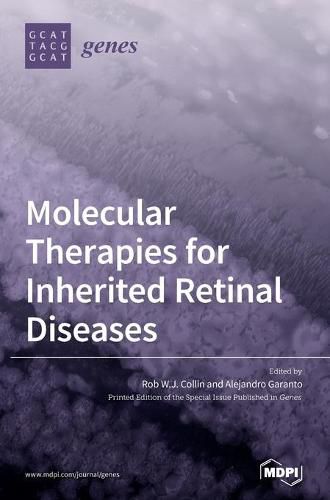Readings Newsletter
Become a Readings Member to make your shopping experience even easier.
Sign in or sign up for free!
You’re not far away from qualifying for FREE standard shipping within Australia
You’ve qualified for FREE standard shipping within Australia
The cart is loading…






This title is printed to order. This book may have been self-published. If so, we cannot guarantee the quality of the content. In the main most books will have gone through the editing process however some may not. We therefore suggest that you be aware of this before ordering this book. If in doubt check either the author or publisher’s details as we are unable to accept any returns unless they are faulty. Please contact us if you have any questions.
Following the implementation of next-generation sequencing technologies (e.g., exome and genome sequencing) in molecular diagnostics, the majority of genetic defects underlying inherited retinal disease (IRD) can readily be identified. In parallel, opportunities to counteract the molecular consequences of these defects are rapidly emerging, providing hope for personalized medicine. ‘Classical’ gene augmentation therapy has been under study for several genetic subtypes of IRD and can be considered a safe and sometimes effective therapeutic strategy. The recent market approval of the first retinal gene augmentation therapy product (LuxturnaTM, for individuals with bi-allelic RPE65 mutations) by the FDA has not only demonstrated the potential of this specific approach, but also opened avenues for the development of other strategies. However, every gene-or even every mutation-may need a tailor-made therapeutic approach, in order to obtain the most efficacious strategy with minimal risks associated. In addition to gene augmentation therapy, other subtypes of molecular therapy are currently being designed and/or implemented, including splice modulation, DNA or RNA editing, optogenetics and pharmacological modulation. In addition, the development of proper delivery vectors has gained strong attention, and should not be overlooked when designing and testing a novel therapeutic approach. In this Special Issue, we aim to describe the current state of the art of molecular therapeutics for IRD, and discuss existing and novel therapeutic strategies, from idea to implementation, and from bench to bedside.
$9.00 standard shipping within Australia
FREE standard shipping within Australia for orders over $100.00
Express & International shipping calculated at checkout
This title is printed to order. This book may have been self-published. If so, we cannot guarantee the quality of the content. In the main most books will have gone through the editing process however some may not. We therefore suggest that you be aware of this before ordering this book. If in doubt check either the author or publisher’s details as we are unable to accept any returns unless they are faulty. Please contact us if you have any questions.
Following the implementation of next-generation sequencing technologies (e.g., exome and genome sequencing) in molecular diagnostics, the majority of genetic defects underlying inherited retinal disease (IRD) can readily be identified. In parallel, opportunities to counteract the molecular consequences of these defects are rapidly emerging, providing hope for personalized medicine. ‘Classical’ gene augmentation therapy has been under study for several genetic subtypes of IRD and can be considered a safe and sometimes effective therapeutic strategy. The recent market approval of the first retinal gene augmentation therapy product (LuxturnaTM, for individuals with bi-allelic RPE65 mutations) by the FDA has not only demonstrated the potential of this specific approach, but also opened avenues for the development of other strategies. However, every gene-or even every mutation-may need a tailor-made therapeutic approach, in order to obtain the most efficacious strategy with minimal risks associated. In addition to gene augmentation therapy, other subtypes of molecular therapy are currently being designed and/or implemented, including splice modulation, DNA or RNA editing, optogenetics and pharmacological modulation. In addition, the development of proper delivery vectors has gained strong attention, and should not be overlooked when designing and testing a novel therapeutic approach. In this Special Issue, we aim to describe the current state of the art of molecular therapeutics for IRD, and discuss existing and novel therapeutic strategies, from idea to implementation, and from bench to bedside.